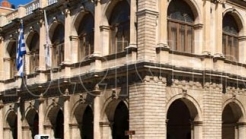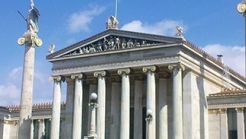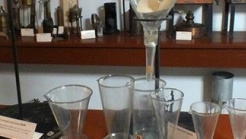

Greece
The National Gallery has in its collections more than 17.000 works of painting, sculpture, engravings and other forms of art, and is the treasury of the recent Greek artistic creativity, covering a timespan from the metabyzantine days up to our days.
The National Gallery was founded on April 10, 1900. For the management position, there had been provisioned since the beginning a curator position. To this spot, painter Georgios Iakovidis was appointed. On June 28 1900 the gallery’s governing rules were also laid out. The first art collections came from the University, and the National Technical University. Later, significant offers were added to those. Today, the National Gallery has in its collections more than 17.000 works of painting, sculpture, engravings and other forms of art, and is the treasury of the recent Greek artistic creativity, covering a timespan from the metabyzantine days up to our days. There is also a decent collection of west European paintings.
The role of the National Gallery is to collect, safeguard, maintain, study and exhibit works of art, with a mind to deepen the cultural cultivation of the public, and the lifelong education through the arts, and the entertaintment that they provide.
In 2000, the National Gallery – Alexandros Soutzos Museum, celebrated 100 years of operation, which were celebrated with the due dignity. This anniversary was marked by the opening of the presentation of the permanent museum collections in its renovated space, which was funded by the “Stavros S. Niarchos” foundation.
The foundation of the National Museum of Sculpture is a brainchild of the director, Marina Lambraki – Plaka, and was completed thanks to her efforts. It operates since 2004 in the park “Alsos Stratou” in the Goudi suburb, and houses the entire history of the recent Greek sculpture, while at the same time offering temporary exhibitions. The Stavros Niarchos Foundation funded both the studies for the renovation of the two listed buildings of the old royal stables of the cavalry, as well as the presentation of the sculptures in one of the twin buildings and in an open area of 6000 sq. meters.
The National Gallery – Alexandros Soutzos Museum has a rich gallery of priceless archives and specialized laboratories of maintenance, equipped with the most modern systems of detection, study and restoration of works of art.
The National Gallery, although having started as a general art museum, through time was specialized in especially two sectors, like the Rennaissance painting and the exhibition of Greek painting through the ages. In total, in the Museum and the various annexes, more than 15.000 works of arts are exhibited. IT is a foundation of civilization, which forms the definite center of Art in the country.


Loggia was the Club of Venetian and Cretan rulers of the Kingdom of Crete. Today it accommodates the Municipality of Heraklion. The building that is visible today it is build in the time of Francis Morosini in 1628. Winged lion of The Most Serene Republic of Adriatic is everywhere.


Plato’s Academy has been the meeting point of all the greek philosophical minds of the ancient times, and still maintains its glamor, attracting thousands of visitors.


The museum Crete chemistry, is in operation since 1996 and is hosted in building the State Laboratory of Chania.
1039 Ε 6061 01515 00